Before I ever had the idea of planning a trip to Japan, the image I had in my mind was a city replete with vending machines. I had written an essay in University all about the history of vending machines, and of course, a portion of that covered Japan. I had these visions in my mind of a hybrid city, old and new, modern and ancient, joined together by rows and rows of vending machines, like the patchwork on an old torn-up sweater. And honestly, I wasn’t that far off.
Vending machines make up a considerable section of the fabric of the country whether you are in a big city or out in the countryside. There are 5 million vending machines to be found across the country. That’s one vending machine for every 23 people, and these babies rack in more than $60 billion annually! So next time you’re visiting Japan, you need to check them out!
To learn more about Vending Machines’ history in Japan, head over to my blog post! While there are all kinds of different vending machine categories around the country, the most prevalent are the drinks machines. If you’re a vending machine hunter like me, you’ll want to look closely inside each one you pass just to check out any new flavours or items you might not have seen before.
Checklist
Check out Vendo Drink Checklist if you want use this as a guide to find all the best things to drink out of vending machines in Japan!
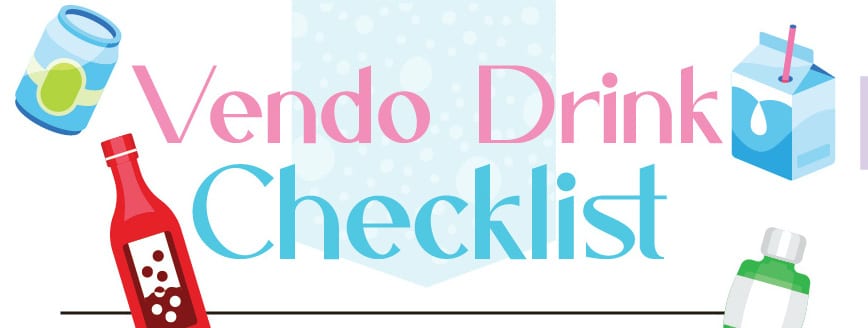
How to Pay
Japan is a majorly cash-based society. A surprising thing considering how we sometimes view Japan as this metropolis of modernity. Most vending machines require coins to dispense any item inside. In the past few years, we have seen more and more modern machines, some of which have entirely LED displays. These newer machines can accept cards but often then only work with local credit cards.
Over the years, more machines have been retrofitted for tap payments. This works with your Suica and Pasmo metro cards. These cards are meant to be used to pay for your trips on the metro but can be preloaded with funds and used at vending machines and even some convenience stores. Suppose you are travelling on the public rail system. In that case, you’ll need one of these cards, so I would always advise you to load it up with more money than you think as you’ll find so many different ways to use your cards.

Hot vs. Cold
Modern vending machines in Japan can keep their drink hot or cold, often in the same machine. Cold beverages generally have a blue LED light with the characters “つめた~い” written on the bottom. On the other hand, the hot drinks have a red light and say “あったか~い.”
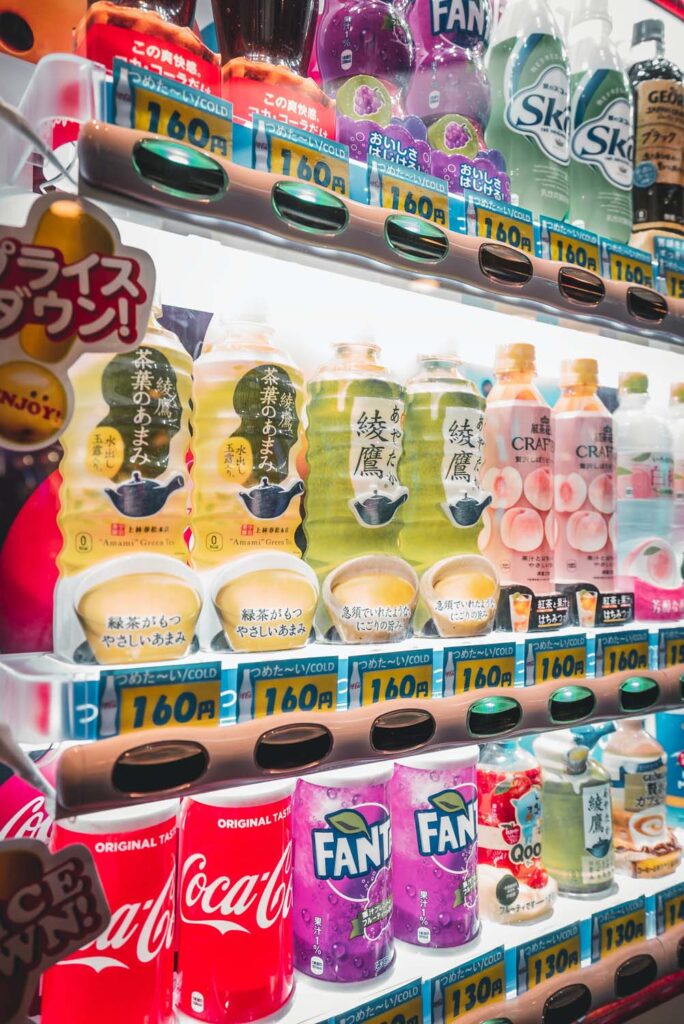
Coffee Vending Machine
One type of machine which you’ll only find in Japan is the canned coffee vending machine. These were invented in 1970 before the prevalence of coffee shops had hit the street. Back then, people mainly drank coffee at home and those who didn’t have time to brew it themselves were excited to find they could get coffee pre-made right on the street from a vending machine.
These early machines were separated into hot and cold machines so people could have their brew whichever way they preferred. Later more modernized versions of coffee vending machines allow you to get both hot and cold coffees in the same machine. These can be found pretty much everywhere you go.
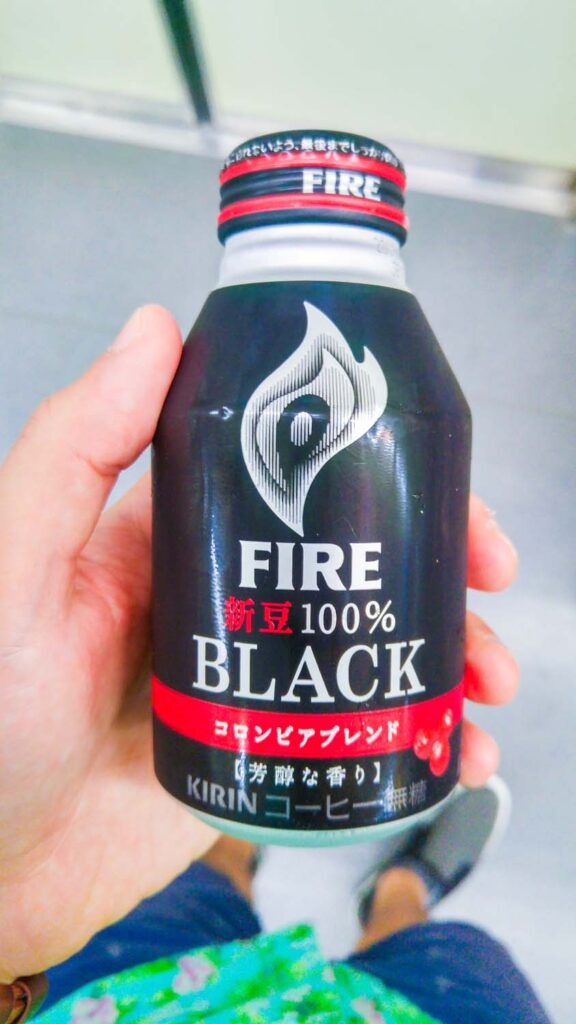
If you are interested in finding out which one of the dozens and dozens of coffee brands and flavours to buy, it’s really a personal preference. The most commonly found brands are Boss, Wonda, Pokka, Kirin, and Georgia. For the most part, any coffee listed as a “milk” or “latte” drink will be very, very sweet. BOSS Black is an excellent option for those who take their coffee plain. This is very comparable to an American drip coffee. Kirin FIRE is my favourite blend, and if you do like a sweet but not too sweet milk coffee, try BOSS Rainbow blend that is like a latte in a can.
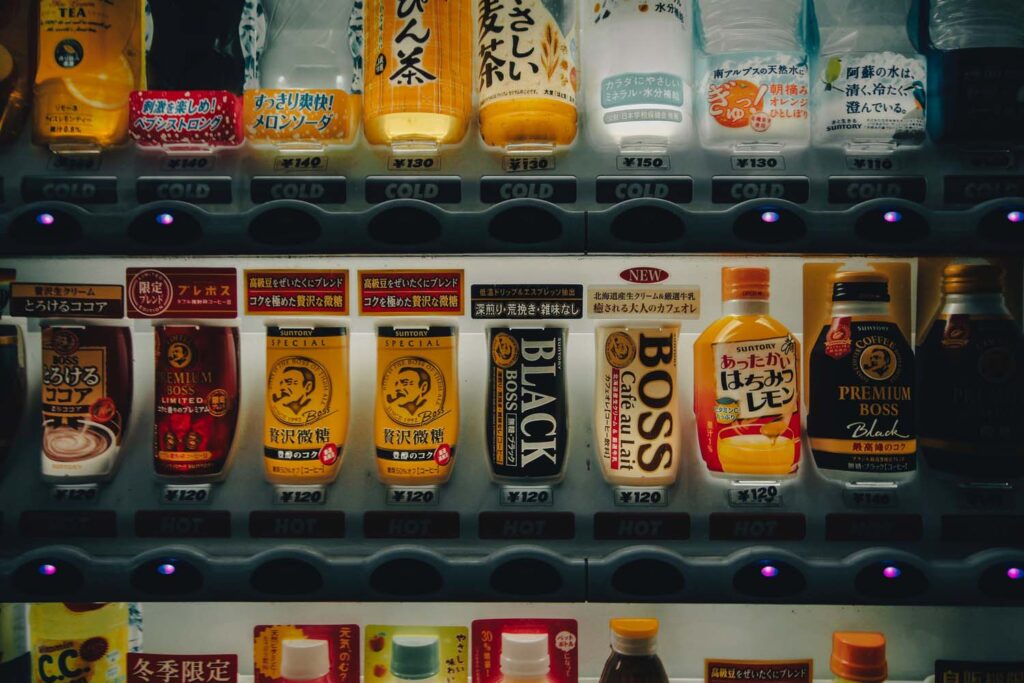
Tea
Tea seems to be synonymous with the cultural fabric of Japan. The tea ceremony, known as chanoyu, or sado, is all about honouring tea. So much care is taken in preparing and presenting the precious ambrosia. It is one of the most honoured traditions in the country. But you don’t need a fancy ceremony to enjoy a cup (or, in this case, a bottle) of tea. Tea is second only to coffee in terms of its presence in vending machines. You can sample many different varieties. I find the teas to be packaged in even more beautiful bottles than the coffee and you’ll often find seasonal designs that give some variety to the packaging.
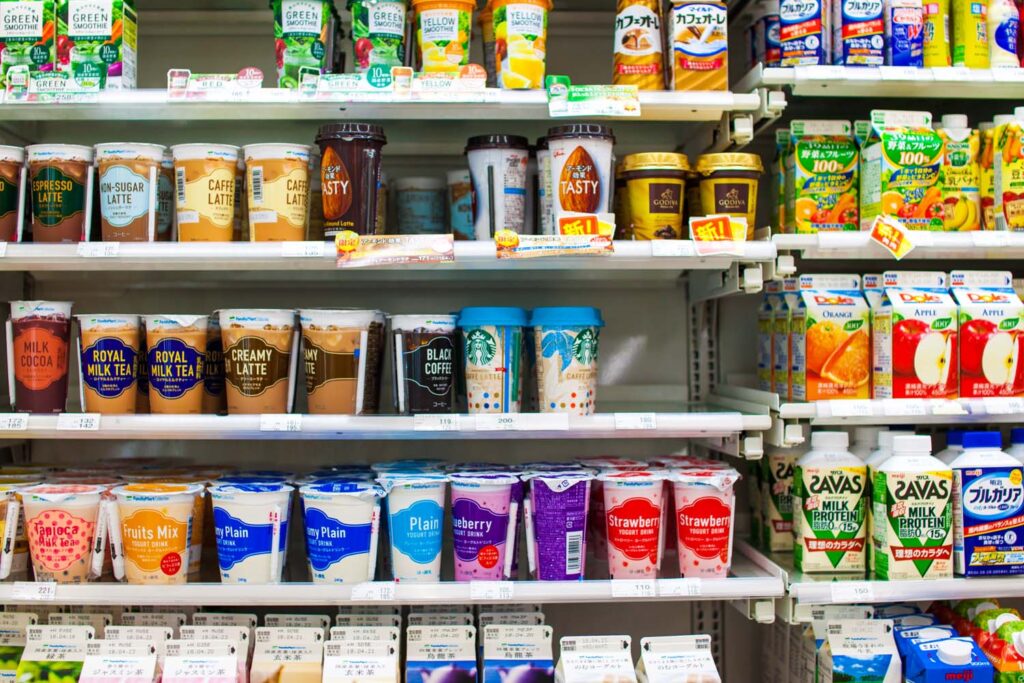
Green Tea
Without a doubt, the most popular tea in Japan is green tea. This tea blend is said to improve health, increase brain function, reduce heart disease, lower the risk of diabetes and even lower your cancer risk. Green tea often comes in clear bottles, so you can distinguish from the tea’s colour how strong it is. Green tea is served both hot and cold, so you can be refreshed no matter what time of year it is!

Jasmine Tea
Jasmine Tea is my absolute favourite blend of tea. Green tea can sometimes be a little bitter for some, whereas jasmine tea is so delicate. Even without any sweetener, it is perfect and keeps you really warm on those cold days!

English Tea
If you like black tea, then look out for anything labelled “English Tea“. You can get a variety of English-style tea in vending machines all around Japan. These are almost always accompanied by milk and sugar. Sometimes they are called “royal” milk tea, after the Queen of England!
Hot Lemon
Another popular option for tea is Hot Lemon. Hot Lemon tea is sweet and sour and full of vitamin C. It’s like drinking hot lemonade. This is great if you got off the plane with a little cold and need a quick fix!
Mugi-cha
One of the most unique tea flavours found in Japan is Mugi-cha. This tea is made from barley and is traditionally drunk in the summer over ice. The tea has a roasted barley flavour and slight bitter after taste, which slightly resembles coffee. While its certainly unique, I think you need to give it a try since some people ADORE it!
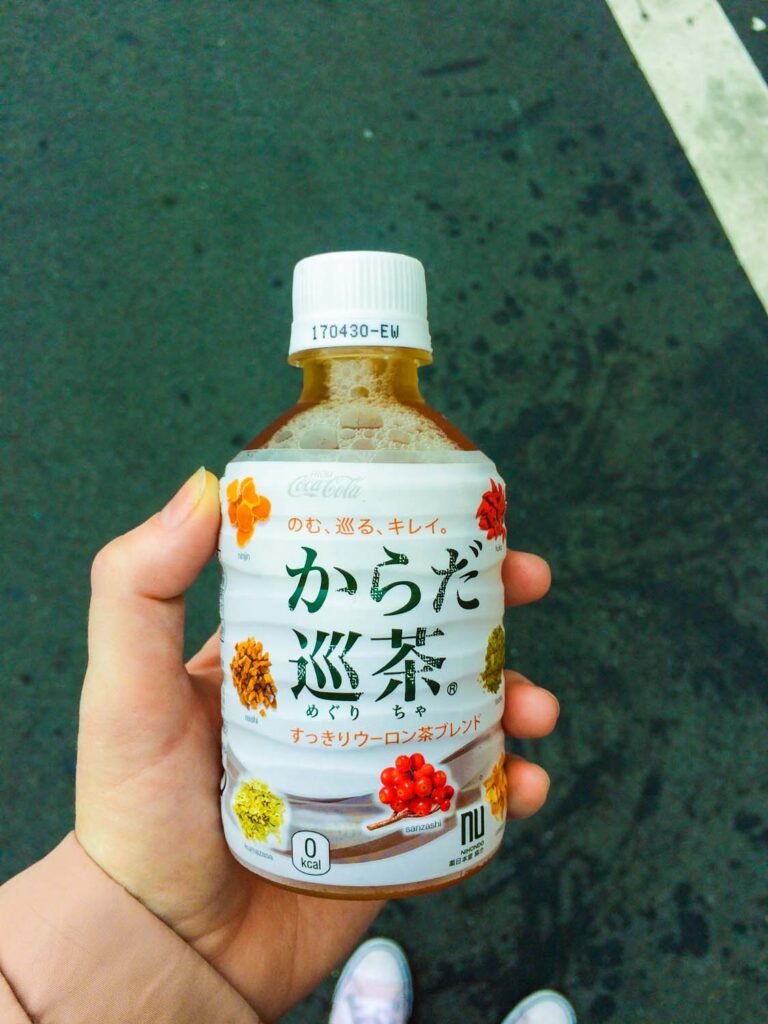
Fruit Flavoured Tea
Fruit flavoured teas are generally served cold and are great for hot days. They come in unique flavours like lychee, peach, melon and even the iconic sakura during the springtime. Since the flavours tend to be seasonal, there is always something unique on offer when you come to visit, so keep your eyes open for something brand new and different!
Coca-cola
Japan is home to perhaps the most extensive variety of soda flavours I’ve ever seen. While Coke, Pepsi and their other American soda brands are just as ubiquitous here as at home, you will find that there are significantly different flavours added into your favourite sodas. One of my favourites has got to be Coca-cola Peach. Made with the flavours of Georgia peaches, the fruit really amps up the taste of Coca-cola. Aomori is famous for its apples and has the highest apple production in Japan. In honour of these delicious apples, Japan came out with Coca-cola apple! Give it a try if you see it.
Fanta
Although Fanta is available worldwide in Japan, the flavours in Japan are out of control! You can find flavours like; Apple, Black Cherry, Peach, Lemon, Snow Squash, White Banana, Strawberry Cream, plum and melon. Surprisingly, Fanta melon is one of the most popular flavours. If you go into a McDonald’s, Fanta Melon is one of the only Fanta flavours on offer. It is often served with a scoop of ice cream as a melon float and truly I cant count the number of melon floats I had while travelling around Japan – they are that delicious!
Salted Lychee
A strange combination which you might not expect to find in a vending machine is Salted Lychee. Okinawa, a prefecture in Japan is known for the chef-quality salt. Kirin came out with a Salted Lychee drink that swept the nation! The salt is said to give this drink a pop of freshness and breaks up the sweetness of the lychee. It sounds strange but I really loved it and think you need to give it a try.
Bikkle
Many Asian cultures have a tradition of drinking yogurt-based drinks. Yogurt is excellent for your gut, and these drinks help with digestion. In Japan, the most popular brand is Bikkle, produced by the Suntory group. Its not too thick and if you like that zing which fermented foods give you, then this is for you!
Aloe Juice
Aloe Vera gel is said to provide a sense of wellness and energy. The gel is made of bits of the plant’s membrane that are extracted into these drinks. The aloe membrane is also said to be good for your skin, so these Aloe Juice drinks are popular with young women. The texture is definitely not for everyone, but since most of the bottles are filled with other fruit juice, the taste is pretty pleasant.
Flavoured Water
Since Japan seems to have an aversion to plain water, and since I do too, I really appreciated all the different varieties of flavoured water vending machines have on offer. Suntory is the leader in this strange world of flavoured waters with options like yogurt, tea, honey lemon, white peach (my fave) and Pear.
I Lohas is another famous brand, from Coca-Cola Japan, with flavours like white grape, orange, peach and lemon. But one unique thing about I Lohas is that they have regional flavours, which you can only find in some prefectures of Japan. In Hokkaido, you can drink blue honeysuckle. In Nagano, you can find apple, and in Tohoku, you can even drink blueberry!
Pocari Sweat
Pocari Sweat is probably one of the worst English translations you could get for something you are expected to drink. And even more shocking is the actual taste of the drink, which is surprisingly salty! Pocari Sweat is one of the most popular energy drinks sold in Japan. It is a flavoured drink containing electrolytes, but that tastes like thick sweat. But I will say, on a hot day when I was feeling dehydrated, it really worked to put me back together!
Calpis Water
Calpis Water is another one of those yogurt-flavoured drinks, but this one is much more diluted than Bikkle. It is like a bottle of watered-down milk, with that sweet-sour taste. Sounds unappetizing, but this is actually one of the country’s best sellers. Sometimes you’ll find a variety of flavours from peach, grape and mango.
Rare Milk
I’m a massive fan of a glass of milk, so I loved seeing cold cartons of milk sold in these vending machines. In fact, on Platform 5 at JR Akihabara Station, you can find a particular vending machine that sells specialty milk from regions all over Japan. There is vanilla-flavoured milk from Kumamoto. You can also get special milk usually only sold in Fukushima, inside this machine!
Ichigo Milk or Strawberry milk is one of the most popular flavours outside of regular plain milk. It’s not as sweet as North American strawberry-flavoured milk, and I think it’s wonderfully refreshing!
Pancake Milkshake
Ever wonder what it might be like to drink a pancake? Well, wonder no more! In Japan, you can find Morinaga Pancake milkshake in a can! Morinaga is a famous powdered pancake mix brand you usually find in the grocery store, but they wanted to find a way to bring this breakfast treat into the vending machines. Why? I don’t know. The taste resembles one of those meal replacement drinks. It is slightly gritty in texture but does indeed taste like a canned pancake milkshake!
Dekavita C
Unlike many other countries, Japan doesn’t seem to rely as strongly on “Red Bull.” Instead, they favour Dekavita C. Dekavita C is Japan’s long-selling energy drink. “Deka” means “big” in Japanese, and “vita” stands for “vitamins,” and “C” stands for vitamin C. This beverage contains 8 different kinds of vitamins and even the all-important royal jelly extract.
Royal jelly is a gelatinous substance produced by honey bees. Studies have suggested that royal jelly is likely to enhance collagen production and even i said to reduces PMS and menopause symptoms!
Ribbon Futte Futte Jelape
If Royal Jelly is something you love, you need to find yourself some Ribbon Futte Futte Jelly Grape. The drink has a layer of grape royal jelly on the bottom of the bottle. Before drinking it, you must vigorously shake it up to break up the jelly into a drinkable form. Again, not for anyone with an aversion to textural drinks, but it’s super tasty!
Marusan Soy Milk Drink
If you don’t drink milk, whether it’s because of your allergies or dietary restrictions, you should seek out Marusan Soy Milk Drinks. These come in all sorts of flavours from peach, mango, cherry, apple pie, chestnut, red bean, roasted sweet potato, mixed fruits, banana, matcha, almond, coffee, tea and chocolate. While these are rarer to find, they are a must-try if you come across them in a vending machine! If you cant find them in a vendo, head over to the konbini!
After reading this hopefully you find that you’re thirsty to get outside and explore Japan’s Vending Machines! If you are planning a trip, be sure to fit in some exploring time to find all these treasures. Let me know in the comments if I missed any of your favourites!
Happy Travels, Adventurers!
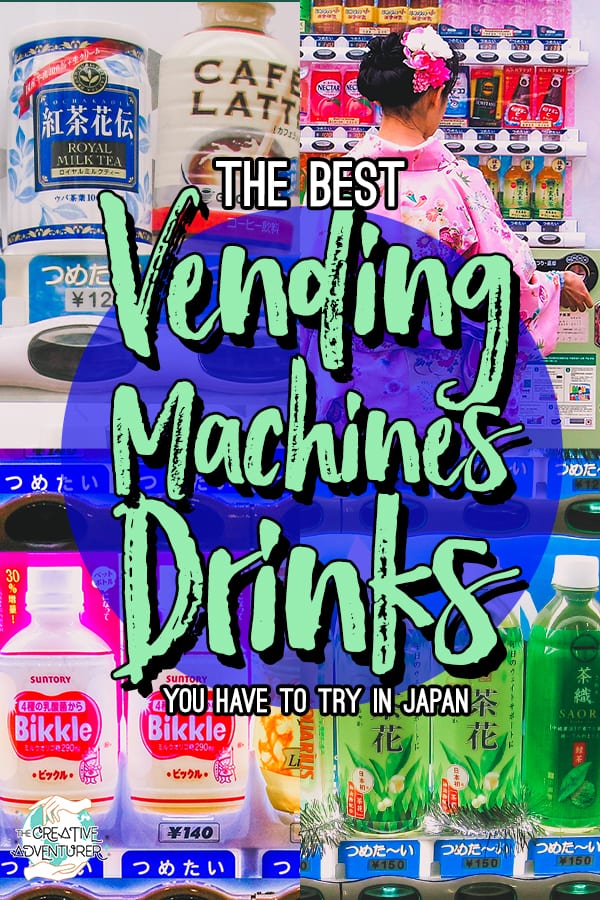


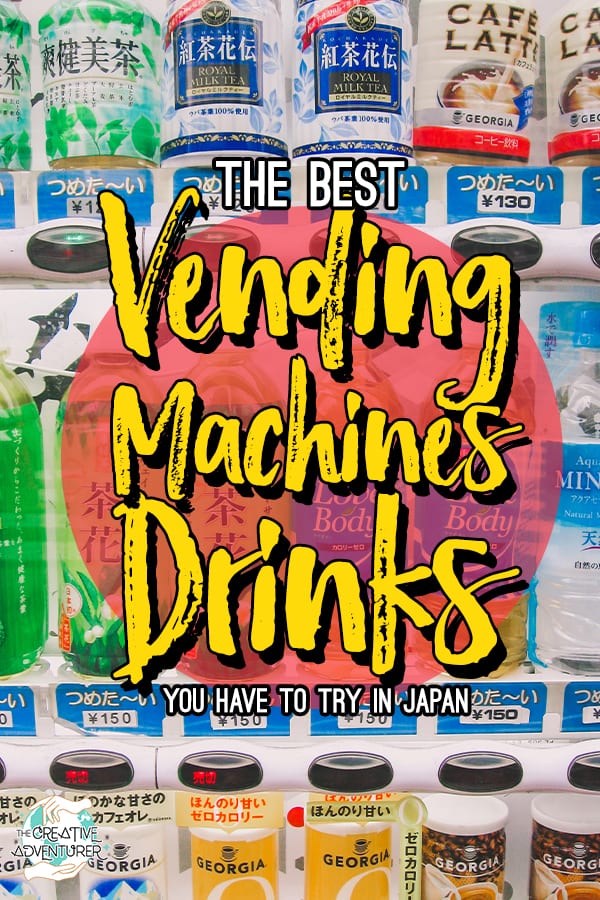

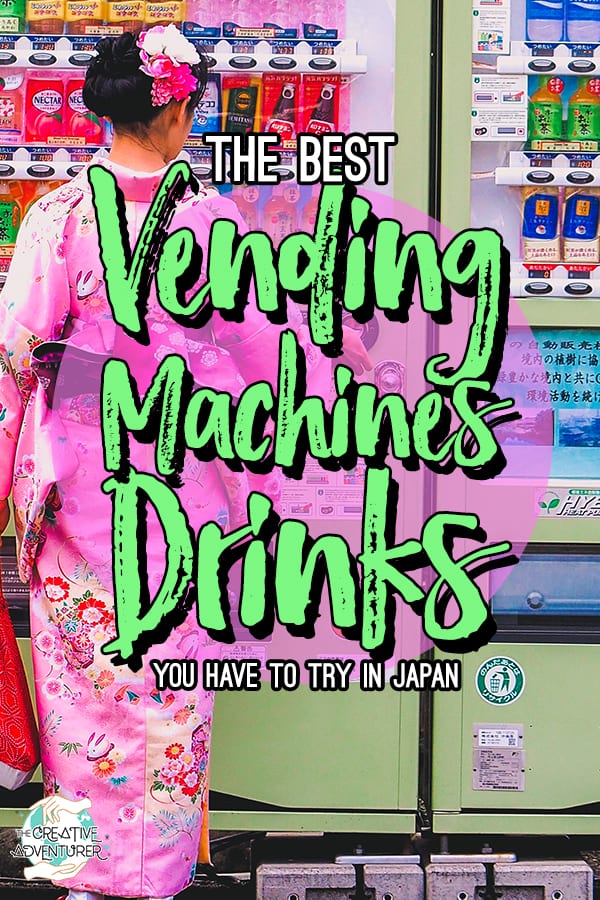


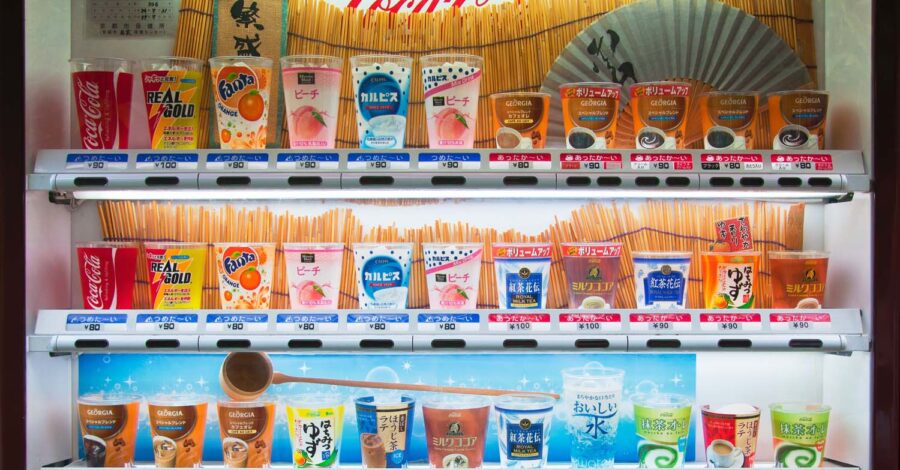
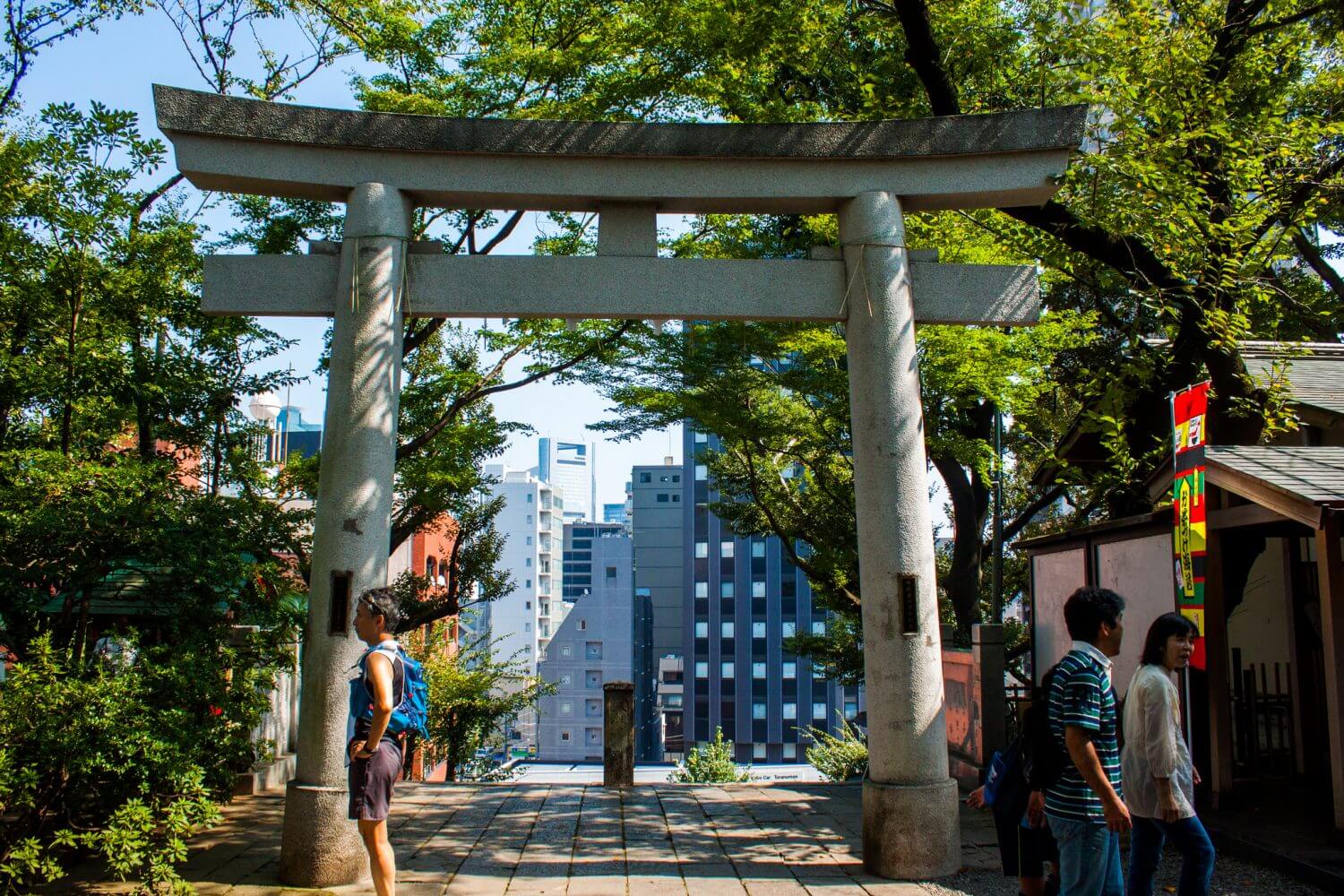

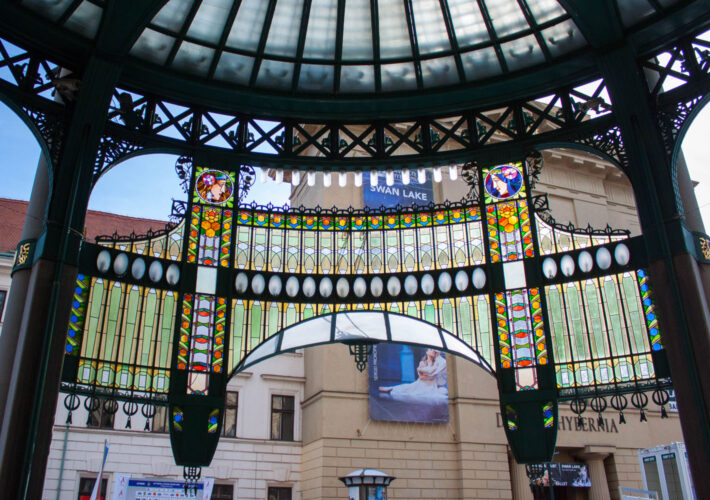
Leave a Comment